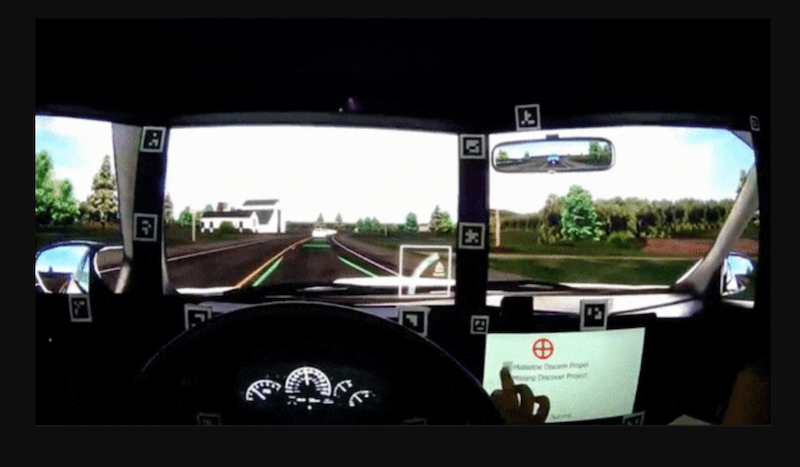
To help automated vehicles prevent the kinds of accidents that can result from a false sense of security, in-vehicle displays could help drivers keep their eyes on the road, a new study finds.
As cars keep getting smarter, automation is making many tricky tasks easier, such as parallel parking. However, although there are cars that are currently advertised as self-driving, they are still only Level 2, or partially automated, and deadly accidents can occur if drivers in these vehicles do not act in time.
“Driver over-reliance on automation is a significant issue in Level-2 systems,” said researcher Birsen Donmez at the University of Toronto.
To look to improve driver performance in automated vehicles, scientists focused on two kinds of in-vehicle displays. In these experiments, 48 volunteers were placed in a driving simulator and given a task that mimicked common distractions, such as reading text messages or searching for a song on a playlist. (Specifically, they were shown lists of short phrases and had to find ones with certain words at certain locations.)
Both kinds of displays occasionally prompted the volunteers to take over driving when automation was not able to handle a situation. In addition, both kinds provided details from each simulated car’s automation capabilities, such as the amount of safe distance between the car and its neighbors and how well the car was staying in its lane.
However, one display also provided drivers with ongoing information about their surrounding traffic, including predictions such as whether a stopped vehicle might result in other vehicles moving into their lane, whereas the other did not. Both systems were compared with a display that just showed whether the automation was on.
The researchers found that with the system that only displayed takeover requests and automation capability data, drivers were worse at monitoring the road compared with the system that just showed whether the automation was on. In contrast, with the system that also showed drivers information about their surrounding traffic, drivers were significantly better at monitoring the road than with the other systems.
“Adding information on surrounding traffic kept drivers better engaged in monitoring and anticipating traffic conflicts, but also improved takeover performance,” Donmez said.
In the future, the researchers will investigate the effects of non-driving behavior on drowsiness while operating an automated vehicle, which they noted can prove even more dangerous than distraction. Future research can also see how well the use of connected vehicle technologies, where cars talk with each other, might further improve safety, said researcher Dengbo He, also at the University of Toronto.
Donmez, He and their University of Toronto colleague Dina Kanaan will detail their findings in the January issue of the journal Accident Analysis & Prevention.

